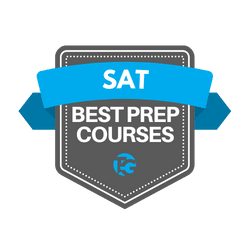SAT Reading & Writing Practice Test 4 (Module 2)
Time limit: 0
Exam Summary
0 of 27 Questions completed
Questions:
Information
You have already completed the exam before. Hence you can not start it again.
Exam is loading…
You must sign in or sign up to start the exam.
You must first complete the following:
Results
Exam complete. Results are being recorded.
Results
0 of 27 Questions answered correctly
Your time:
Time has elapsed
Categories
- SAT Craft & Structure 0%
- SAT Expression of Ideas 0%
- SAT Information & Ideas 0%
- SAT Standard English Conventions 0%
-
Be sure to write down how many questions you answered correctly. You can visit our scoring page to calculate your scaled SAT score!

Need More Help?
Read our reviews of the best SAT prep courses. We reviewed the best providers and have exclusive discounts you can use.
- Review
- Answered
- Correct
- Incorrect
-
Question 1 of 27
1. Question
CorrectIncorrect -
Question 2 of 27
2. Question
CorrectIncorrect -
Question 3 of 27
3. Question
CorrectIncorrect -
Question 4 of 27
4. Question
CorrectIncorrect -
Question 5 of 27
5. Question
CorrectIncorrect -
Question 6 of 27
6. Question
CorrectIncorrect -
Question 7 of 27
7. Question
CorrectIncorrect -
Question 8 of 27
8. Question
CorrectIncorrect -
Question 9 of 27
9. Question
CorrectIncorrect -
Question 10 of 27
10. Question
CorrectIncorrect -
Question 11 of 27
11. Question
CorrectIncorrect -
Question 12 of 27
12. Question
CorrectIncorrect -
Question 13 of 27
13. Question
CorrectIncorrect -
Question 14 of 27
14. Question
CorrectIncorrect -
Question 15 of 27
15. Question
CorrectIncorrect -
Question 16 of 27
16. Question
CorrectIncorrect -
Question 17 of 27
17. Question
CorrectIncorrect -
Question 18 of 27
18. Question
CorrectIncorrect -
Question 19 of 27
19. Question
CorrectIncorrect -
Question 20 of 27
20. Question
CorrectIncorrect -
Question 21 of 27
21. Question
CorrectIncorrect -
Question 22 of 27
22. Question
CorrectIncorrect -
Question 23 of 27
23. Question
CorrectIncorrect -
Question 24 of 27
24. Question
CorrectIncorrect -
Question 25 of 27
25. Question
CorrectIncorrect -
Question 26 of 27
26. Question
CorrectIncorrect -
Question 27 of 27
27. Question
CorrectIncorrect
